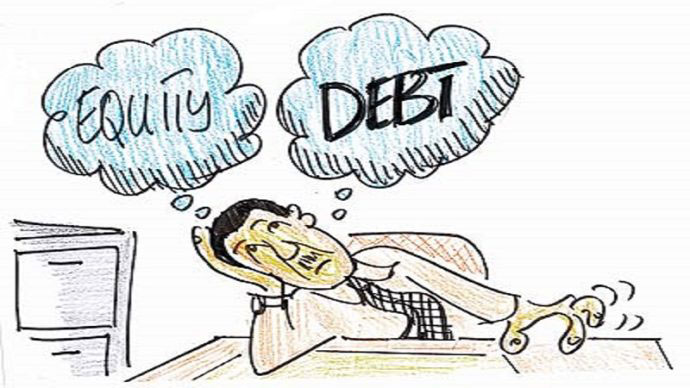A weighted average cost of capital (WACC) is a financial ratio that measures the company's costs for financing. It weights debt and equity according to their proportion of the overall capital structure. The company's top executives utilize WACC to decide how they can finance projects or operations, and it aids investors in determining the maximum amount they are willing to pay for their investment. This article has a guide on what does a high weighted average cost of capital (WACC) signify.
Businesses can raise capital from external sources in two primary methods: selling stock or taking on debt in the shape of loans or bonds. Knowing the costs of this financing is an essential element of making decisions for the managers who run the business and is a crucial metric used by investors when deciding whether to invest. If a company is able to access only one kind of capital, such as debt or equity getting, the price is relatively simple. WACC can be a much more detailed measurement of the average rate of return required by all its investors and creditors.
Where Is WACC on the Balance Sheet?
WACC is usually referred to as "cost of capital" and can be called "right side finance." In ledgers, the right part of the balance sheet includes the sources of financing that a business uses (including the funding and debt). So, the main elements used to determine WACC are located on the right-hand portion of the balance sheet.
What Does WACC Tell Us?

Investors, WACC is important because it provides the amount of money the company has to make in order to earn a profit for its stakeholders. As the name suggests, the weighted mean cost of capital could change according to a variety of variables, such as the rate for equity return. A rising WACC implies that the business's valuation could decline since it uses more equity and debt financing for operations. On the other hand, the decrease in WACC suggests that the company is growing its earnings and relies less on external funding.
What Exactly Is WACC Used to Do?
The weighted average cost of capital acts as the rate of discount used to calculate the net present value (NPV) of the firm. It can also assess potential investment opportunities since it is believed to be the cost of option for a company. Therefore, it is being used as an obstacle rate for companies. A business will typically employ its WACC as an obstacle rate to evaluate mergers and acquisitions (M&''A) as well for financial modeling that includes internal investing. If an investment option has a lower IRR (IRR) than its WACC, it should either purchase the shares of its own or pay dividends rather than invest in the venture.
How to Calculate WACC

Now you have a better understanding of what WACC is and how it works, let's look at how you can determine WACC using the correct formula. WACC can be calculated by multiplying the cost of each source of capital by the weight that corresponds to it and then adding the items together to calculate WACC, the cost per capita that's weighted. The more complicated the capital structure of the company and the more complex is WACC calculation will be. WACC calculation. The principal sources of capital of the most publicly traded companies are typically common stocks and debt.
What is a Good WACC?
If you type "what is an excellent WACC" in Google, You will get many answers. One method to identify a quality WACC is to look at each sector's average. As you see from the photo above, the weighted mean cost of capital differs from one industry to the next and can range from 10 percent for health care and 7 percent for utilities.
This is because lenders and investors believe that utility stocks are more secure than the market and require lower returns to finance these companies using both debt and equity. As a general rule, the best WACC will be comparable with the average of the sector. If lenders and investors require an increase in return in order to finance a business, it could mean that they are more concerned about risk than the industry.
Conclusion
Although WACC isn't among the most frequently used metrics by individuals, like the company's price-to-earnings ratio, experts frequently use it as an element of their study of different investments. You're bound to find reports from analysts that you read when looking into stocks. It doesn't matter how you discover it, whether by yourself or through an analysis report of an organization that interests you -- WACC represents a company's total cost of capital from various possible sources. It's the average amount of money it has to make to satisfy all its investors. This is one aspect to consider when deciding if the potential profits outweigh the risks when you invest in them.



